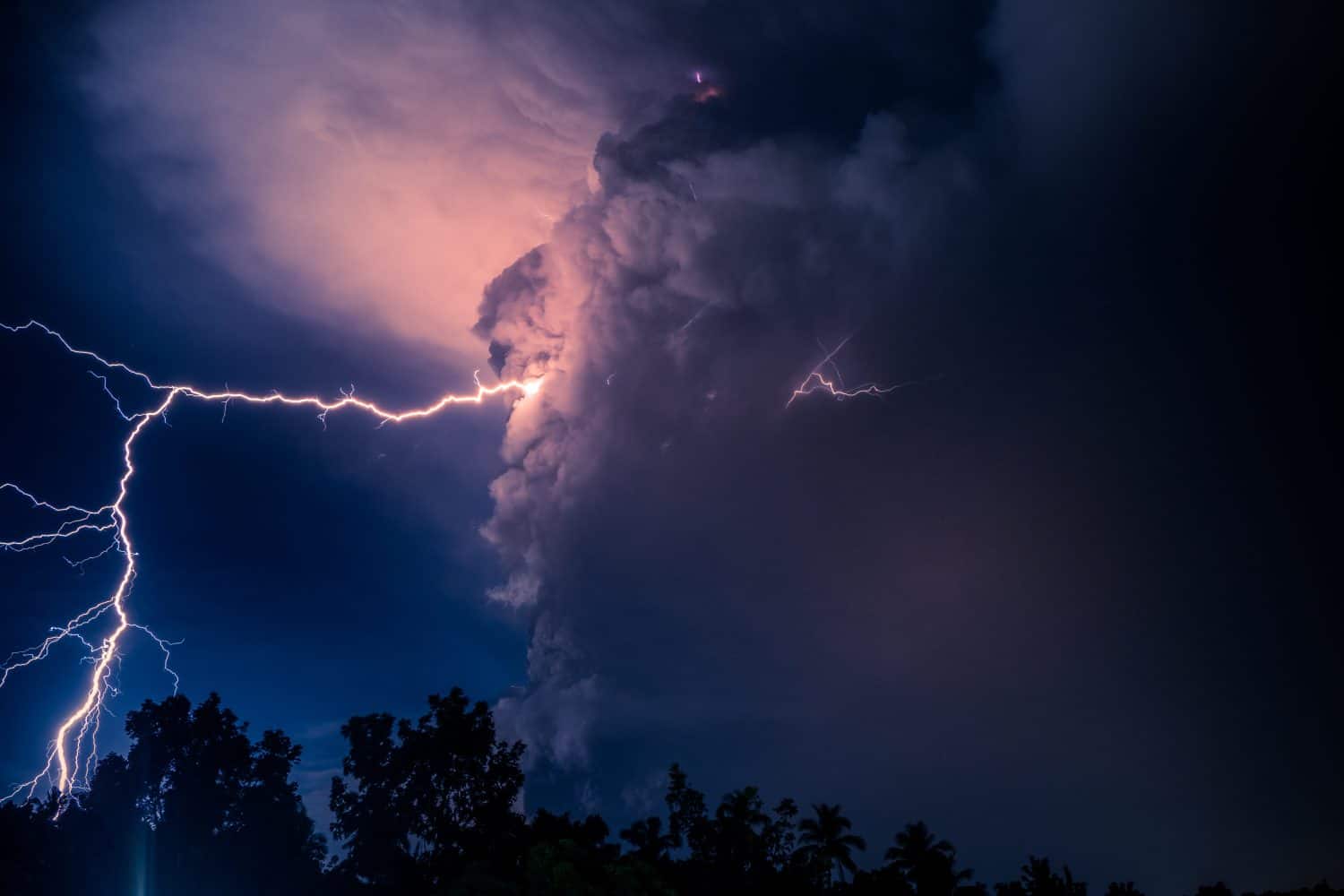Quite a few sights on Earth must be seen in person to be truly believed. You can see volcanic lightning on video, but seeing it in person is the only way to experience the raw power of this unique natural phenomenon. Believed to have been first seen in 79 AD, this is one of the most fascinating events about volcanoes that is not an eruption.
What Is Volcanic Lightning
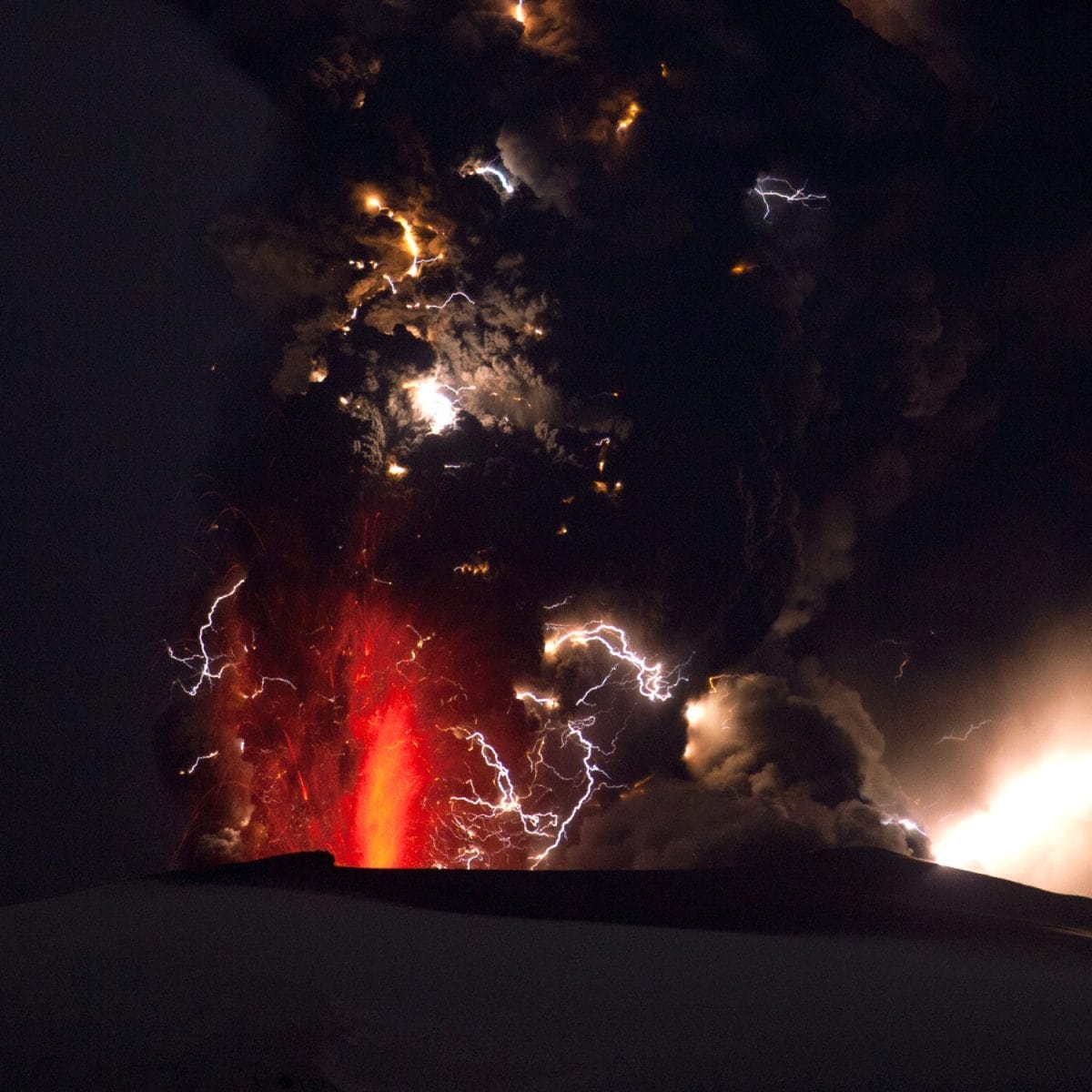
Volcanic lightning is a weather phenomenon that occurs most frequently during eruptions. Lightning bolts chase up ash clouds, creating a unique picture-worthy experience when seen against a volcano’s “dirty thunderstorm.”
First Discovery
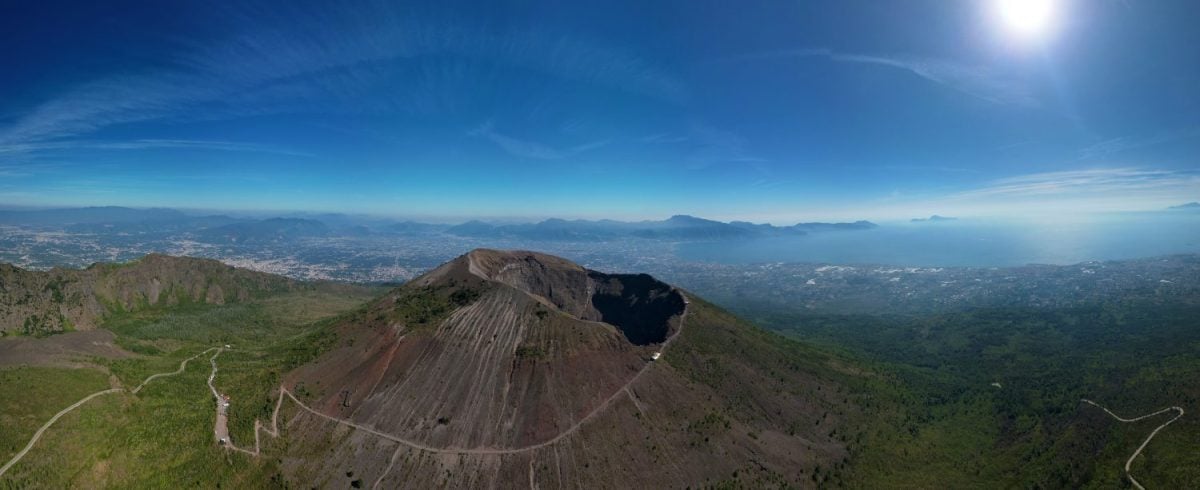
The earliest recorded activity around volcanic lightning is from Pliny the Younger, who describes the phenomenon surrounding Mount Vesuvius’s eruption in 79 AD. Between 1858 and 1872, Luigi Palmieri conducted the first studies of volcanic lightning at the volcano.
Causes of Volcanic Lightning

These lightning bolts start when volcanic ash particles collide and generate static electricity. Known as the “dirty thunderstorm,” friction, charge separation, and energy buildup assist the release of these volcanic lightning bolts.
Different Types
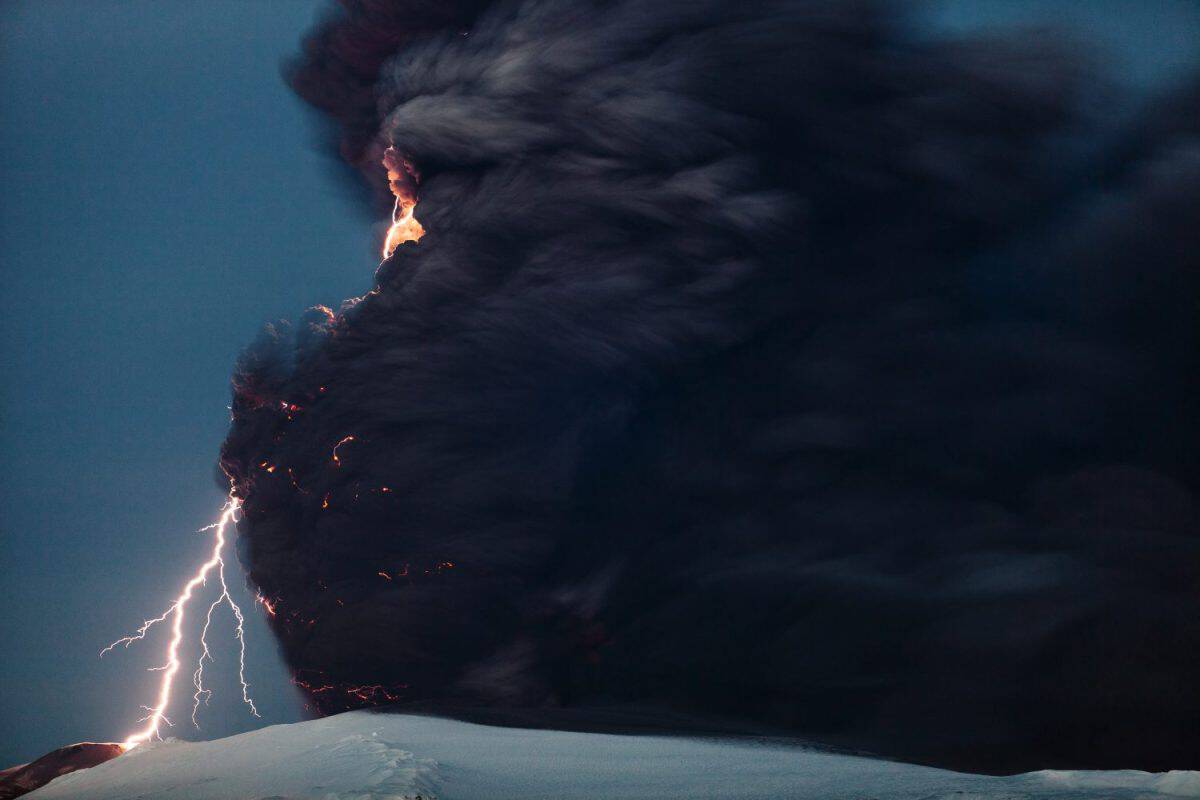
While it’s easy to think that volcanic lightning is just one type of lightning experience, it can be one of three different types. Vent lightning occurs when the charge occurs near the volcanic vent. Plume lightning occurs higher up in the volcanic plume, and Ash Cloud lightning occurs within the ash cloud and is often interchanged with the “dirty thunderstorm” look.
Versus Regular Lightning
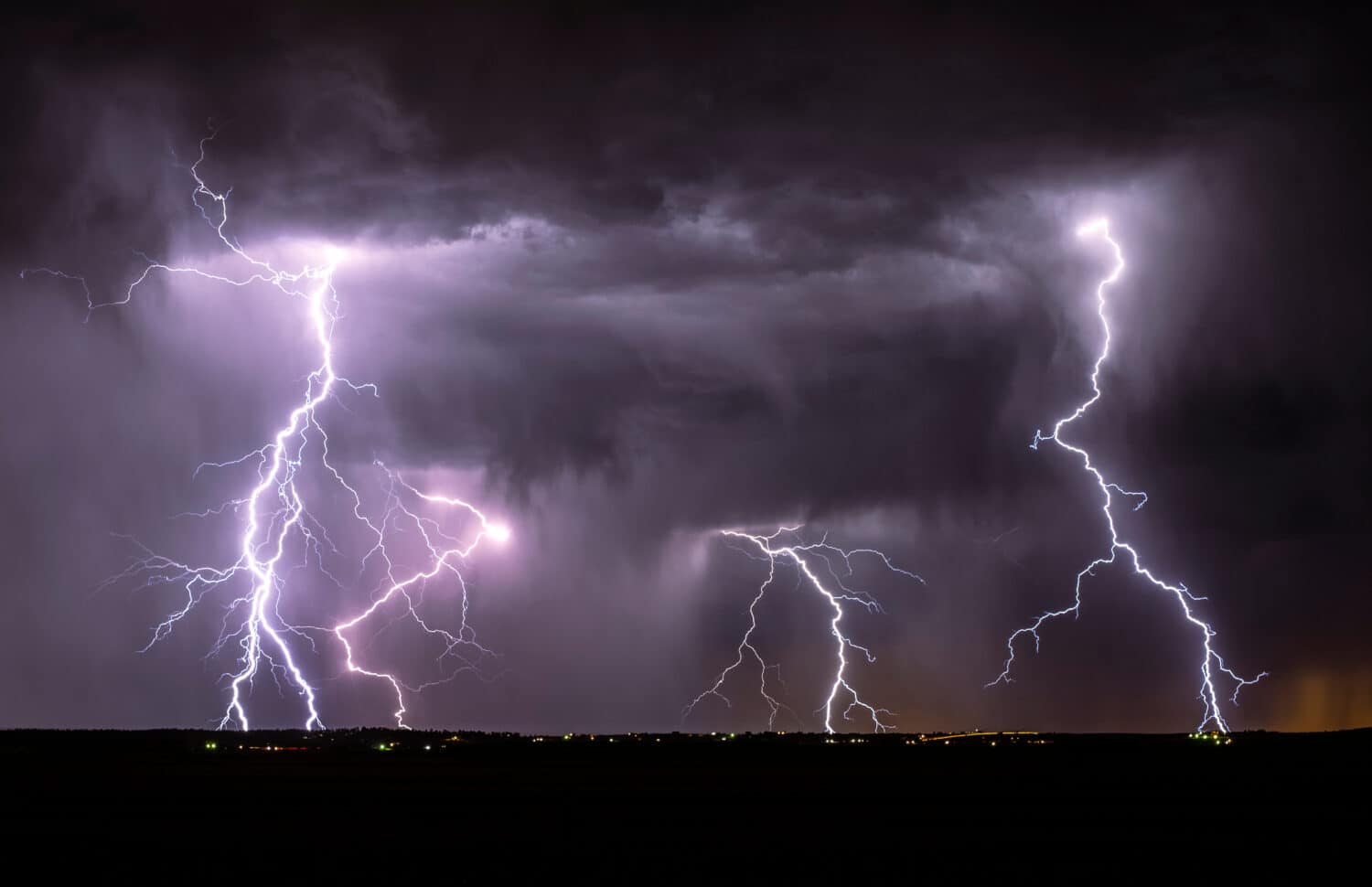
Volcanic lightning only occurs when a perfect storm of volcanic ash, lava, and rock collides to create static electricity, so it’s very different from regular lightning. The lightning most traditionally associated with thunderstorms occurs when ice crystals and raindrops collide within a thunderstorm cloud, causing a charge separation.
Frightening Beauty
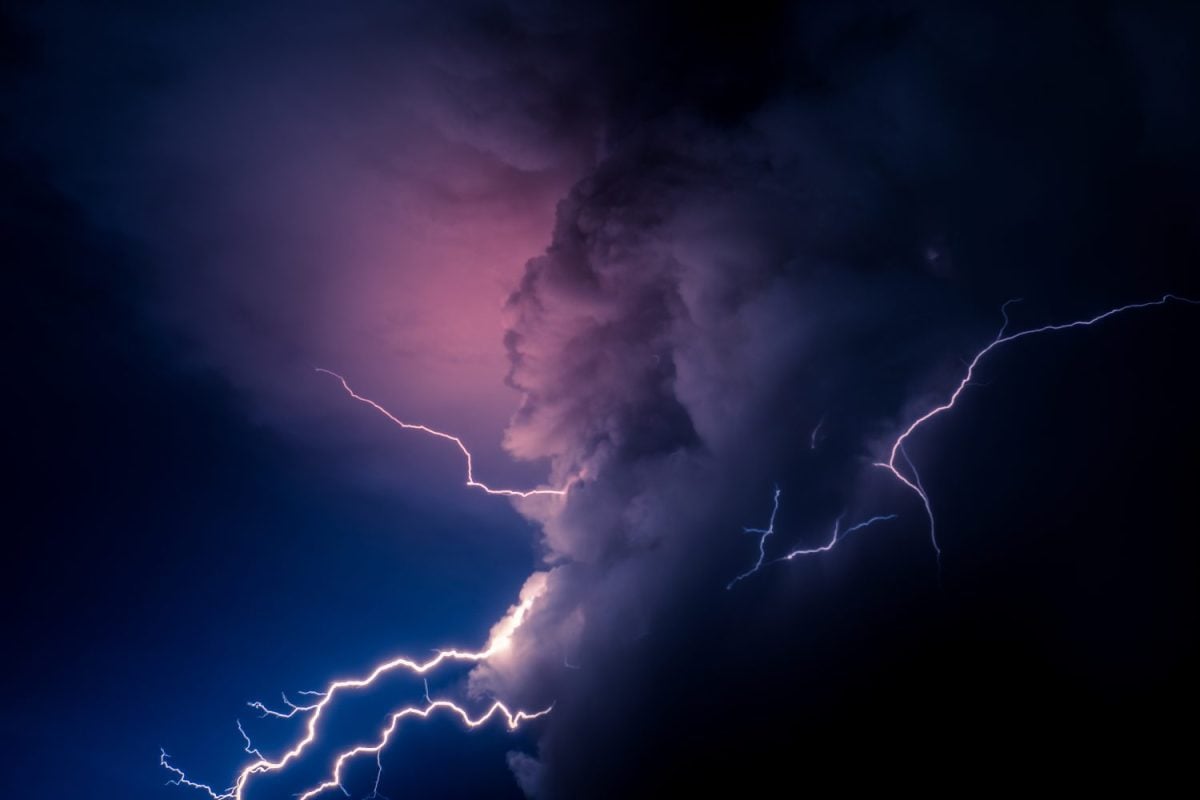
It’s safe to say that volcanic lightning is both frightening and beautiful. Seeing up close is terrifying, but it creates some of Earth’s most beautiful visual experiences. Video footage of volcanic lightning will never do justice compared to seeing it in person, but it’s close.
Volcanic Spherules
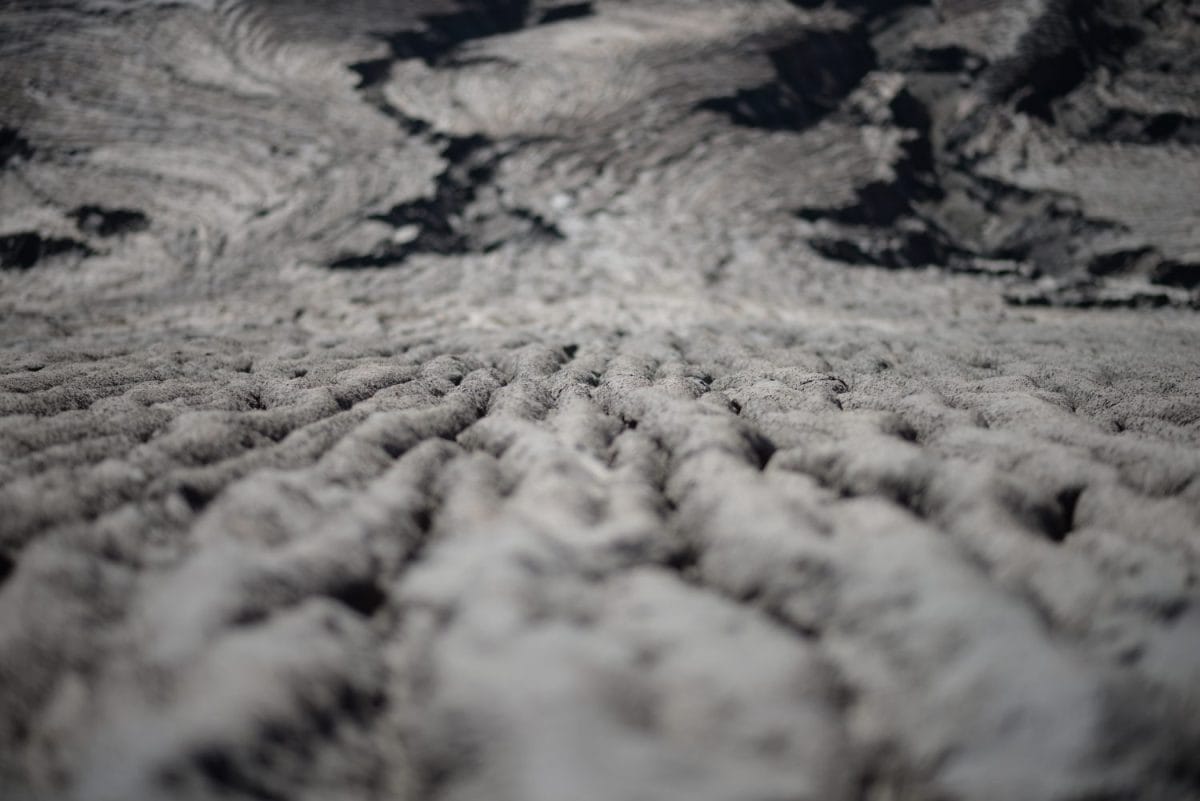
Perhaps your child’s next science project can be all about volcanic spherules. A by-product of volcanic lightning, these spherules occur when cloud-to-ground lightning strikes reach 30,000 degrees Celsius. At this temperature, lightning touching the ground could allow the ash particles to solidify as they cool down, which forms orb shapes.
Mount Eyjafjallajökull
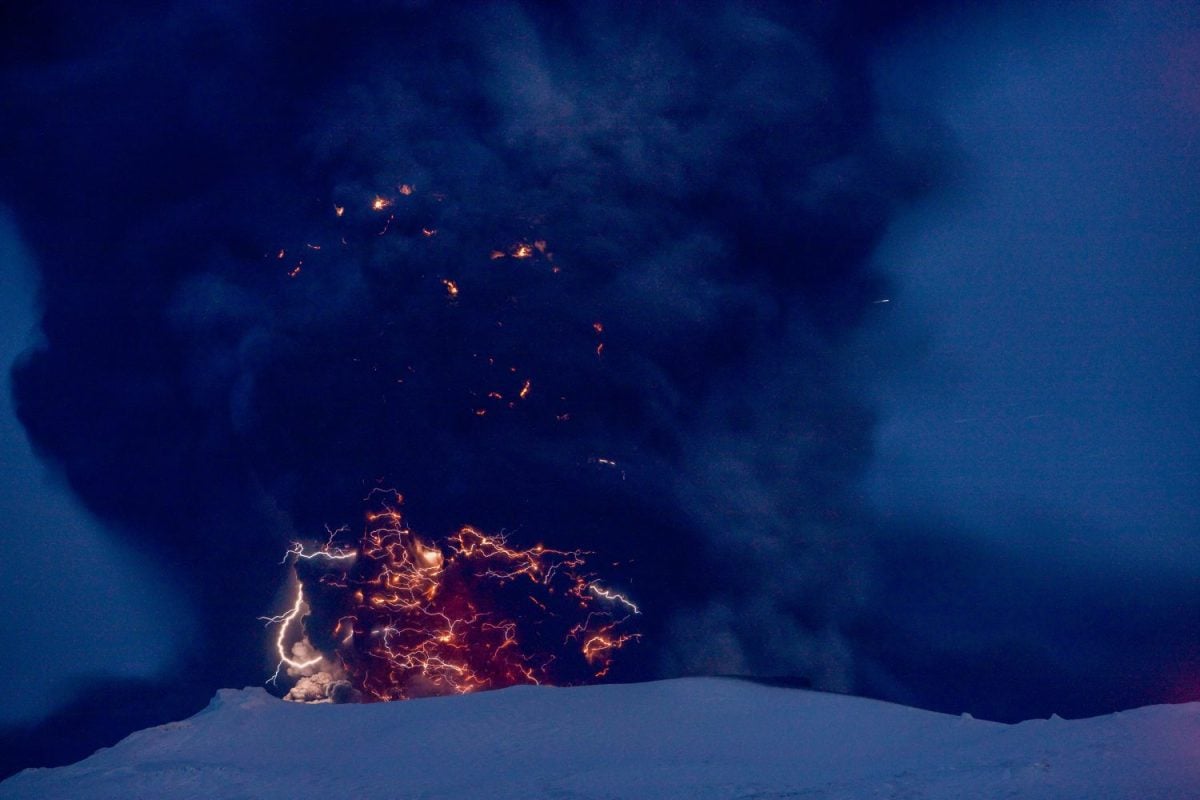
One of the most recent displays of volcanic lightning activity that delighted onlookers occurred in 2010. The eruption of Mount Eyjafjallajökull not only disrupted air travel across Europe but also provided hours of volcanic lightning displays.
Mount St. Helens

Similar to Mount Eyjafjallajökull, the eruption of Mount St. Helens in 1980 is also regarded as one of the best displays of volcanic lightning activity. The data from this eruption helped scientists further understand how volcanic lightning takes place, and VOLTAGE, the Volcanic Lightning and Tephra Generation project, continues to study this phenomenon.
Monitoring Volcanoes
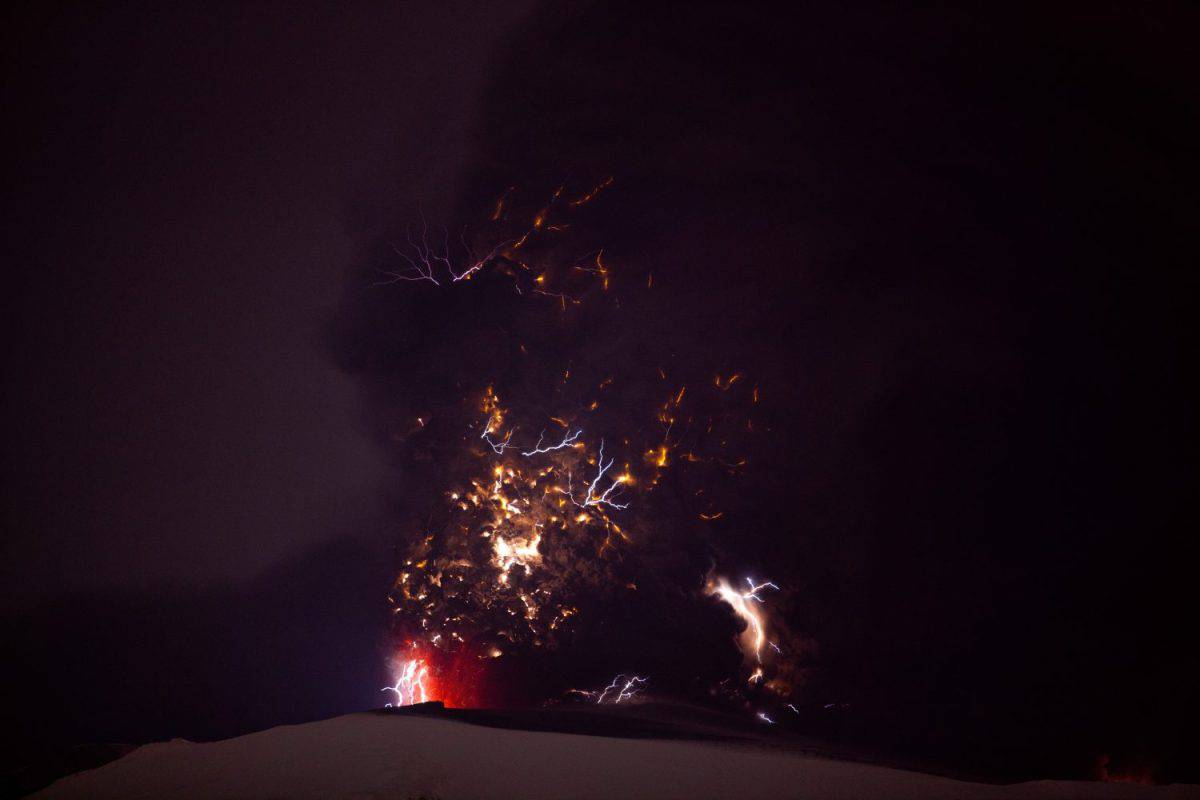
While not necessarily specific to volcanic lightning, as the eruption of Mount Eyjafjallajökull showed, monitoring volcanic activity is crucial to help avoid any air traffic troubles. Volcanic ash can travel hundreds of miles downwind from a volcano, causing airplane engine damage, disrupting visibility, and interfering with navigation systems.
The image featured at the top of this post is ©Izzy12/Shutterstock.com.
